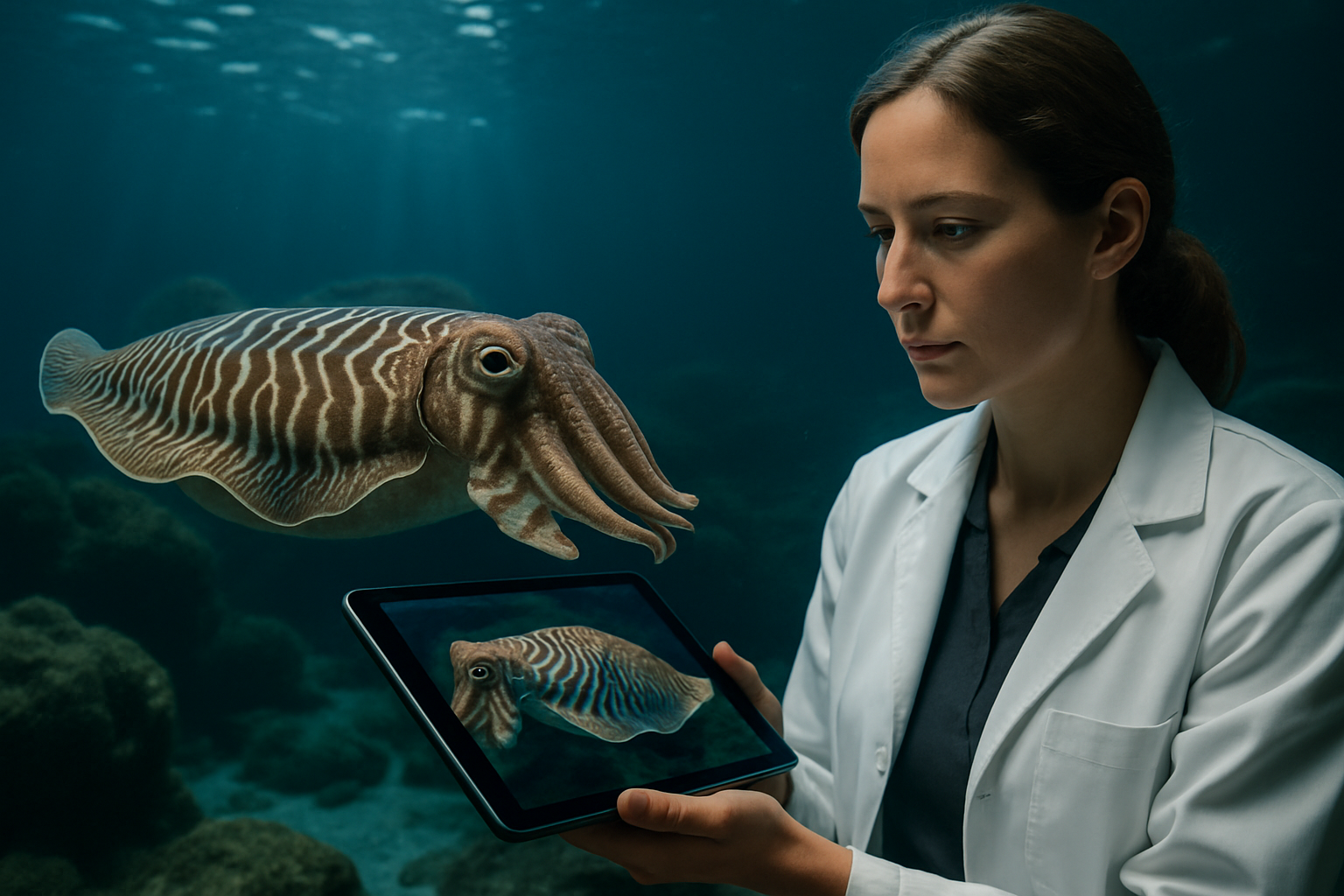Decoding the Enigmatic World of Cuttlefish Communication
Beneath the ocean's surface lies a realm of fascinating creatures, but few rival the cuttlefish in their ability to captivate and perplex marine enthusiasts. These masters of disguise possess an intricate communication system that has long baffled scientists and divers alike. From rapid color changes to mesmerizing skin patterns, cuttlefish employ a visual language that is as complex as it is beautiful.

The Cuttlefish: Nature’s Living Mood Ring
Cuttlefish, belonging to the class Cephalopoda, are marine animals known for their exceptional camouflage abilities and intelligence. Their most striking feature is their ability to rapidly change color and texture, a trait that serves multiple purposes, including communication. Unlike other animals that rely on vocal cords or body language, cuttlefish have evolved a sophisticated system of visual signals that allows them to convey complex messages to both predators and potential mates.
The secret to their chameleon-like abilities lies in their skin structure. Cuttlefish skin contains millions of pigment-filled sacs called chromatophores, which can expand or contract to create different colors and patterns. Beneath these are iridophores and leucophores, which reflect light and contribute to the overall visual effect. This intricate system allows cuttlefish to produce a vast array of colors and patterns in a matter of milliseconds.
The Language of Patterns
Cuttlefish communication goes far beyond simple color changes. These intelligent creatures use a combination of patterns, each with its own meaning. Some common displays include:
-
Zebra Pattern: Often used during mating rituals or as a warning to potential rivals.
-
Flamboyant Display: A striking pattern used to startle predators or confuse prey.
-
Stipple Pattern: A mottled appearance that helps the cuttlefish blend into rocky or coral-rich environments.
-
Eyespots: Large, dark circles that mimic eyes, used to intimidate predators or rival males.
These patterns can be combined and altered in countless ways, allowing cuttlefish to convey nuanced messages that we are only beginning to decipher.
The Role of Polarized Light
Recent research has uncovered another layer to cuttlefish communication: the use of polarized light. Cuttlefish can perceive and manipulate polarized light, which is invisible to the human eye. This ability allows them to send hidden messages that are undetectable to many predators and prey species. Scientists believe this could be used for private communication between individuals, adding another dimension to their already complex language.
The discovery of polarized light communication has opened up new avenues for research and has potential applications in fields such as optical technology and underwater communication systems.
Cuttlefish Body Language
While their color-changing abilities steal the spotlight, cuttlefish also use body postures and movements to communicate. These physical signals often complement their visual displays, creating a multi-faceted form of expression. Some notable body language cues include:
-
Arm Postures: Different arm configurations can signal aggression, submission, or mating intentions.
-
Fin Movements: Rapid undulations of their fins can express excitement or agitation.
-
Body Orientation: The direction a cuttlefish faces in relation to others can indicate interest or hostility.
-
Ink Releases: While primarily used as a defense mechanism, ink releases can also serve as a form of communication, signaling distress or danger to nearby cuttlefish.
Implications for Marine Ecology and Conservation
Understanding cuttlefish communication has far-reaching implications for marine ecology and conservation efforts. By decoding their visual language, scientists can gain insights into cuttlefish behavior, mating patterns, and population dynamics. This knowledge is crucial for developing effective conservation strategies for these fascinating creatures and their ecosystems.
Moreover, the study of cuttlefish communication has inspired advancements in biomimicry. Engineers and designers are looking to cuttlefish for inspiration in developing new camouflage technologies, display systems, and even soft robotics. The potential applications range from military defense to underwater exploration and environmental monitoring.
Challenges in Studying Cuttlefish Communication
Despite recent advancements, studying cuttlefish communication presents numerous challenges. The underwater environment makes long-term observation difficult, and the speed at which cuttlefish can change their appearance complicates data collection. Additionally, interpreting the meaning behind various displays requires extensive behavioral studies and context-specific analysis.
Researchers are developing new technologies to overcome these obstacles, including underwater cameras capable of detecting polarized light and machine learning algorithms to analyze complex pattern sequences. These tools promise to unlock even more secrets of cuttlefish communication in the coming years.
The Future of Cuttlefish Research
As our understanding of cuttlefish communication grows, so does our appreciation for the complexity of marine ecosystems. Future research directions include:
-
Mapping the neural pathways involved in color change and pattern generation.
-
Investigating the potential for inter-species communication between cuttlefish and other marine animals.
-
Exploring the impact of environmental factors, such as ocean acidification and temperature changes, on cuttlefish communication abilities.
-
Developing non-invasive methods for studying cuttlefish behavior in their natural habitats.
The world of cuttlefish communication continues to captivate scientists and nature enthusiasts alike. As we unravel the mysteries of their underwater language, we gain not only a deeper understanding of these remarkable creatures but also valuable insights into the intricate web of life beneath the waves. The cuttlefish, with its living canvas of colors and patterns, serves as a reminder of the wonders that still await discovery in our oceans and the importance of preserving these complex ecosystems for future generations.





